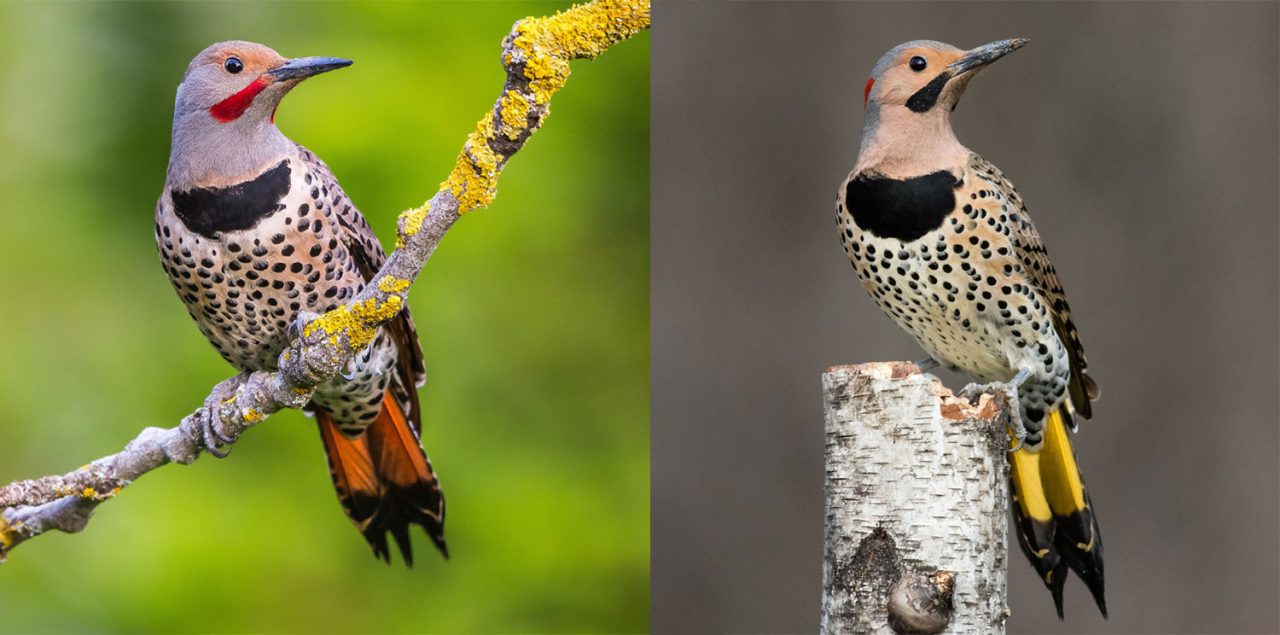

If you offer suet at your feeder, flickers may become regular visitors. The most active displaying occurs early in the breeding season, before nest-building, when the birds are pairing and there is competition for mates. Flickers use various visual displays, including head-weaving and body-bobbing, during courtship and as signs of aggression toward intruders (Fig. A popular feeding tree is obvious because of the number of holes in it. Look for fresh wood chips on the ground below an excavation site. Signs of roosting, nesting, and feeding sites are likely to be seen in wooded areas where there are old, large trees that have some dead or rotting wood on them. What to look for: Flickers can be recognized by their undulating flight-wings flapping as the bird flies up and wings folded on the way down. Winter is a good time to watch flickers with the leaves off many trees, the birds are more easily seen. They are often seen hopping on lawns where they catch ants and other insects with their sticky tongues. Where and When to see: Flickers are usually found in areas dominated by trees they also occur in treeless areas where utility poles, wood-sided homes, and other structures substitute for trees.
Individual flickers return to the same area to breed year after year. The parents continue to feed the young once they fledge, and soon the young begin to follow the adults to foraging sites and gather their own food. Both sexes feed the young, which leave the nest after 24 to 27 days. Both male and female flickers incubate the 5 to 8 eggs for about 11 days, then brood the newly hatched young for about 4 days. 
The breeding season for Northern flickers is from March to June, with young leaving the nest as late as mid-July. Eggs are laid on wood chips created during excavation of the nest. Complete excavation may take only a few days in soft wood, but averages 14 days. Both male and female flickers excavate the nest, the male doing substantially more than the female. Occasionally flickers will re-use a nest hole after doing some minor work to it. Nest holes may be started but never completed, possibly due to poor location or quality of the wood. The birds use their stout beaks to chisel down 6-18 inches, making a wide bottom for the egg chamber (Fig. They will also use specially designed nest boxes. Northern flickers excavate nest sites in dead or dying trees, aging utility poles, fence posts, and house siding. Flickers are attracted to suet feeders, especially in winter. Hollow sounds also may indicate that insects are present, thus encouraging flickers to continue chiseling away. If they see or hear an insect, they will continue chiseling until the insects are caught. When searching for insects, flickers tap on wooden surfaces and look and listen for insect movements. While flickers eat tree-dwelling and wood-boring insects, they also will eat berries, fruits, nuts, and seeds. Northern flickers commonly feed on the ground, searching for ants and beetle larvae.






 0 kommentar(er)
0 kommentar(er)
